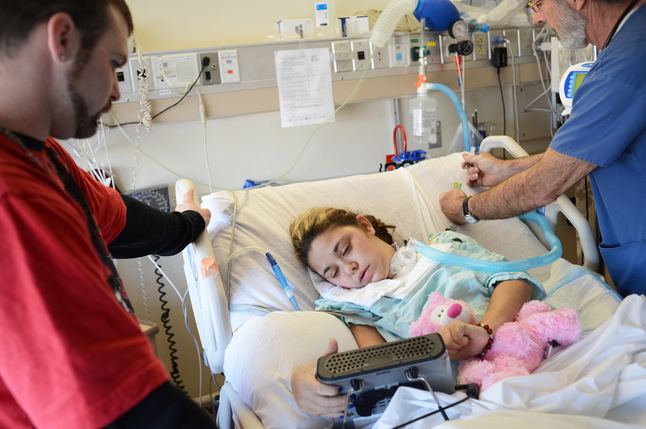Guillain-Barré syndrome is a neurological illness that affects only a small percentage of the population. Idiopathic peripheral neuropathy is an autoimmune disease that affects the peripheral nerve system, causing weakness and paralysis that can continue for months or years.
Guillain-Barré syndrome (GBS) is a neurological condition that frequently manifests after a respiratory illness or gastroenteritis, sometimes known as food poisoning. Symptoms begin to appear within a few days or weeks of the infection occuring. In rare instances, GBS may develop as a result of a vaccination.
Every year in the United States, approximately one in every 100,000 persons is infected with GBS. Experts are baffled as to why this ailment manifests itself in some persons but not others. It is not a hereditary or contagious disease.
The symptoms, causes, diagnosis, and treatment of GBS are all discussed in this article. It also looks into the possibility of a connection with vaccinations.
Definition

GBS is a serious autoimmune disease that can affect any part of the nervous system other than the brain and spinal cord. It is a rare and life-threatening condition. The peripheral nervous system is the term used to describe this.
An autoimmune disease is characterised by the immune system’s attack on and destruction of specific groupings of normal cells. It is the myelin sheaths of peripheral nerves that are attacked in the event of GBS.
The axons of nerves are protected by myelin sheaths. The myelin sheaths these long, thin extensions of nerve cells, assisting them in transmitting signals. GBS can even cause damage to the axons themselves in some situations.
The damage stops certain information, such as touch sensations, from being transmitted from the nerves to the spinal cord and the brain. This results in a sensation of numbness. Muscle weakness arises as a result of the inability of the brain and spinal cord to convey messages back to the body.
Anyone who experiences unexplained tingling sensations and weakness should seek medical assistance as soon as possible after experiencing them.
Types of GBS
GBS can manifest itself in a variety of ways.
In the United States, the most prevalent variety of GBS is acute inflammatory demyelinating polyradiculoneuropathy (AIDP). A common occurrence is that the weakness begins in the lower portion of the body and progressively progresses up the body, affecting other parts of the body.
Miller Fisher syndrome is a type of acquired nerve illness that is a form of Guillain-Barré syndrome. It accounts for around 5–10 percent of GBS cases in the United States. Symptoms of this condition include difficulty walking and maintaining balance. It has an effect on the muscles of the eyes and the tendon reflexes.
The acute motor axonal neuropathy (AMAN) syndrome is another unusual variant of GBS that produces rapid paralysis in the limbs and, in some cases, difficulty breathing. It is possible that nerves in the head are involved. Similarly, acute motor-sensory axonal neuropathy is a kind of GBS that begins with sensory alterations such as tingling or numbness and progresses to muscle weakness and paralysis.
Some varieties begin more slowly and entail symptoms that continue for a longer period of time. Periods of weakness repeat over a period of years in patients with chronic inflammatory demyelinating polyneuropathy (CIDP). Multifocal motor neuropathy is a type of motor neuropathy in which many muscles in a specific location of one or both arms or legs become weak.
Symptoms
Symptoms of GBS often appear within 3 weeks of the first infection. They are typically characterised by tingling and weakness in the feet and hands, as well as pain in the legs and back. Walking may be challenging for some children.
It is possible that the weakness will begin in the upper body, but it is more common that it would begin in the lower legs and spread up. It is possible that it will not spread beyond the legs in some circumstances.
If the weakness extends beyond the legs, a person may have the following symptoms:
- Both sides of the body experience weakness
- difficulty breathing
- a lack of strength in the arms
- paralysis of the whole body
In certain cases, the symptoms can worsen over a period of several hours, days, or weeks. In nine out of ten cases, the symptoms worsen during the third week of treatment. It is unlikely that the weakness will worsen after 4 weeks.
In addition to muscle weakness and tingling, nerve alterations can result in the following symptoms:
- vision problems, due to weakness in the eye muscles
- difficulty speaking, chewing, and swallowing
- severe pain, especially at night
- problems with coordination
- changes in heart rate or blood pressure
- problems with digestion and bladder control
Anyone experiencing these symptoms should seek medical assistance immediately. In some situations, patients lose the ability to move their muscles, which can lead to paralysis. In addition, respiratory difficulties and cardiovascular abnormalities might be life threatening in some cases.
GBS can also have an emotional impact on the patient. Adjusting to sudden paralysis and the need for assistance can be a painful experience.
When the symptoms have reached their apex after 4 weeks, they remain steady for a period of time as the nerves progressively repair.
Causes
Although the actual aetiology of GBS is still unknown, it is known to occur frequently following an infection. People have reported experiencing it after receiving a vaccination in rare instances.
It can affect anyone at any age, but those over the age of 50 tend to be at a greater risk.
GBS has been linked to infections with the following pathogens:
- Campylobacter jejuni bacteria, which can cause a bowel infection and diarrhea
- the Epstein-Barr virus, which causes infectious mononucleosis, or glandular fever
- cytomegalovirus, which may cause no symptoms
- Mycoplasma pneumoniae bacteria, which can infect the respiratory tract
- possibly the Zika virus, through researchers are still investigating this
According to one idea, viral and bacterial infections alter the way the immune system responds to the peripheral nerves in the body. As a result, myelin and axons are mistakenly identified as foreign substances by the immune system, and they are targeted for destruction.
Is there a link between the vaccine and this?
The Food and Drug Administration (FDA) issued a warning in July 2021 that there may be an elevated risk of getting GBS in the 42 days following the administration of a Johnson & Johnson (Janssen) COVID-19 vaccination. The FDA granted emergency use authorisation for this procedure, which was followed in this instance.
GBS cases, on the other hand, are extremely rare as a result of this vaccine. Approximately 12.5 million doses of the vaccine had been delivered by July 12, and there had been approximately 100 cases of GBS reported by that date.
There may be a link between immunisation and GBS that dates back several decades. There was a slight increase in the chance of having GBS in 1976 after receiving a vaccination against swine flu. However, the rise was just by one instance in every 100,000 people.
Experts have investigated the possibility of a relationship between GBS and flu shots, with varying degrees of success. According to the Centers for Disease Control and Prevention, there may be 1–2 additional cases of GBS per million doses of these vaccines than would be expected in the normal course of events (CDC).
According to the Centers for Disease Control and Prevention, the chance of having GBS after an episode of the flu is likely higher than the risk of developing it after receiving a vaccination.
Diagnosis
GBS can be difficult to diagnose, especially in the early stages of the condition. Each individual experiences different symptoms, which can be confusing because they can be similar to those experienced by people with various neurological diseases.
A doctor will take into account the following:
- whether the weakness affects both sides of the body
- how fast the symptoms have appeared
- the order in which they have appeared
They may also recommend the following tests:
- a nerve conduction exam, which can show whether nerve signals are slow
- electromyography, sometimes called EMG, which tests the nerve function within muscle fibers
- a lumbar puncture, which involves removing a sample of cerebrospinal fluid for testing
Treatment
There is currently no cure for GBS, however medication can help patients manage their symptoms more effectively.
Immunoglobulin therapy is one strategy, which involves receiving antibodies from a donor intravenously, through an IV, as part of a treatment regimen. This may be beneficial in reducing the autoimmune reaction.
An alternative treatment method is plasma exchange, which entails drawing blood and passing it through a machine that separates the plasma from the blood cells and red blood cells. This helps to eliminate some of the antibodies that are attacking healthy cells while also allowing the body to renew part of its plasma supply.
Both of these treatments are equally beneficial as long as they are administered within two weeks of the onset of GBS symptoms in the patient. There appears to be no difference between using both therapies and not using them.
A person who is experiencing severe symptoms may require assistance breathing, a heart monitor, and assistance in keeping saliva or food from entering their airways.
Complications such as blood clots can occur throughout the recuperation process due to a lack of activity. Receiving blood thinners through injection can assist to prevent this from happening. A physical therapist can also be of use.
Later on, a rehabilitation plan may involve physical and other types of therapy to help the patient regain strength, movement, and other functions lost due to the accident. Counseling may also be beneficial because GBS can have an impact on a person’s mental and emotional well-being.
There has been some study that suggests corticosteroid injections may be beneficial in reducing the detrimental immunological response, however there is currently insufficient evidence to support this theory.
Conclusion
In the majority of instances, the nerve damage caused by GBS progresses rapidly for 2–3 weeks before plateauing at 4 weeks in severity. A small number of persons have paralysis, but the vast majority recover within 6–12 months.
According to the National Institute of Neurological Diseases and Stroke, the following are some facts about the symptoms and recovery:







